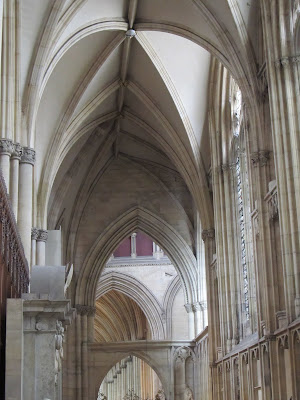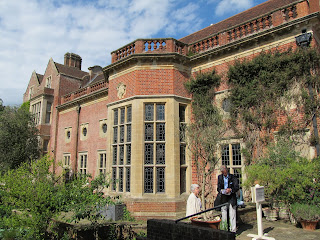May 19, 2011
I am lost to the world
On which I squandered so much time . . .
I am dead to the world’s commotion,
And rest in a quiet realm!
I live alone in my own heaven,
In my love, in my song.
Friedrich Rückert, set to music by Gustav Mahler
Another great performance at the Brighton Festival – a song recital by British baritone Christopher Maltman and pianist Joseph Middleton. [For musicians, the complete program is below.] Songs about or written in Venice serves as the theme of the first half. Maltman’s singing during the first two songs of Fauré’s Cinq mélodies ‘de Venise’ lacks a sense of line, but the rest of the set shows both artists to advantage. Middleton’s playing is exquisite.
The hall is very dark and after the first set the woman beside me laments “It’s a pity it’s so dark. You can’t read the translations.”
Maltman returns and addresses the audience. “It’s a great honor and pleasure to be singing in my home town, but it’s also bloody nerve-wracking!” Everyone laughs. “One of the side benefits, though, is being able to take the No. 7 bus to work.” More laughter. He asks for the houselights to be raised so that we can read the poetry.
The first half closes with Reynoldo Hahn’s Venezia. Maltman describes the composer as a “terribly dapper little fellow” who thought his job was to be “the footlights that illuminate the text.”
After the interval, Maltman announces “Sorry to disturb your evening by talking,” but a couple of days ago he and Middleton decided to rearrange the program: “The three songs by Schubert to Metastasio texts are rather
Low,” he explains
and the set after (more Schubert) rather high.
But I suspect it’s also a matter of poetic tone. The concert closes with Mahler’s Rückert Lieder, whose final song ends:
I am lost to the world
On which I squandered so much time . . .
I am dead to the world’s commotion,
And rest in a quiet realm!
I live alone in my own heaven,
In my love, in my song.
There is a long silence before applause breaks out, punctuated by shouts of “Bravo!”
Maltman and Middleton do perform an encore, but they make us earn it: we call them back on stage at least four times. The song they choose, “Mattinata,” disrupts the spell. It’s one of those tunes that sticks in your head once you’ve heard it. I can hear several people humming it as we leave.
(I had blackberry ice cream at intermission, by the way!)
Complete Program
Christopher Maltman baritone
Joseph Middleton piano
Fauré Cinq Mélodies de Venise Op. 58
Schumann Two Venetian songs from Myrthen Op. 25
Schubert Gondelfahrer D809
Mendelssohn Venetianisches Gondellied Op. 57 No. 5
Hahn Venezia - Six chansons en dialecte vénitien
Schubert Three Rückert Lieder
Schubert Drei Lieder (Metastasio) D902
Mahler Rückert Lieder






















































